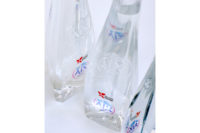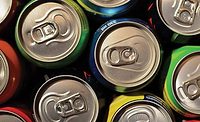Sponsored Content
Why does beverage packaging matter?

“Why does beverage packaging matter?”, you might ask.
Packaging plays a huge role in consumer decision-making. Former CEO of The Coca-Cola Company, Muhtar Kent, once said, “It’s the single biggest driver of sales increases in the world.” But standing out on the store shelf and catching the eye of the consumer is the challenge in this day and age of overwhelming product choices. Appealing to your consumer is just one aspect to consider when deciding which package to use. The package needs to fulfill several roles. Let’s look at a few of the main roles or functions of the packaging, including: Protection, Marketability, Convenience, and Communication.
The main role a package must fulfill is protecting the product. For beverages, that means the product needs to be protected from leakage or contamination during storage and handling. Many products need protection from ingress of oxygen, sunlight exposure, loss of carbonation, and migration of package material components. All these things can impact the taste and quality of the product. These things become even more critical if a product claims something that must be substantiated for the life of the product.
The packaging should also promote the product. It should draw the consumer in and make them proud to be consuming the product. The design of the package itself communicates something about the product and creates an impression of the brand in the mind of the consumer. Some packaging is easily identifiable like a long neck beer bottle.
Ever purchased an on-the-go beverage only to get in your car and it’s too large for your cup holder? Consumer convenience is key to beverage packaging. The packaging should make the product convenient to purchase, carry, open, and use. This is more challenging than you might think when trying to maintain a tight seal. Packaging should be easily held in one hand as well as be able to fit into a fridge or a home’s cabinets.
Lastly, the packaging should communicate required information to the consumer. This includes nutritional content, ingredients, place and date of manufacture, and shelf life information. Packaging can also be used to communicate information regarding promotions, special holiday graphics, how the product can be used, and more.
All these factors must be considered when designing packaging for a beverage that will not only sell on the retail shelf, but also protect the beverage, and provide an enjoyable experience to the consumer.
For more information on beverage processing, check out the Fundamentals of Beverage Technology online course.
Looking for a reprint of this article?
From high-res PDFs to custom plaques, order your copy today!






